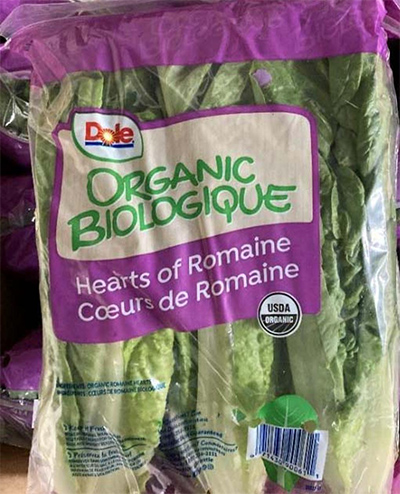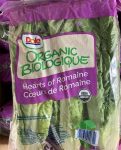Last month, the FDA held a public meeting to discuss its New Era of Smarter Food Safety initiative, with a rallying call to create a more “digital, traceable and safer food system.”
FDA Deputy Commissioner for Food Policy and Response Frank Yiannas made it clear that the FDA is not replacing FSMA. Rather, the goal is to build on it, recognizing changes in the food industry over the last 10 years and the technologies available to tackle new challenges.
This isn’t surprising given continuing quality issues resulting in food recalls and shelf withdrawals. Last year, two major outbreaks of E. coli that were tied to consumption of romaine lettuce made a mark on industry perceptions, impacting customer trust, brand loyalty and the bottom line of companies involved were affected. Research by Allianz found recall costs could reach $10,000,000 for significant events.
To achieve the FDA’s goal of end-to-end traceability, the amount of information carried by every food item needs to increase, as will information about its location and condition in the supply chain. Grocers are at the sharp end of the food chain, meaning everything the FDA is proposing will impact them. As well as being merchandisers, they are brand-owners in their own right. They work directly with farmers and growers, they are directly involved in food safety, storage and distribution, and they feel the impact of recalls more than most. Unlike others in the food chain, they interact with consumers daily. This is important to note, since consumers are expecting communication on recalls immediately. In a recent study of more than 15,800 global consumers, 66% of respondents noted that they expect immediate notification of a product recall and another 28% stated they expect notification within a week.1 Furthermore, 88% said if a retailer immediately informed them of an issue, they would be more likely or slightly likely to trust them. The study also found that only 16% of consumers completely trust the product information provided to them from retailers today. In short, the impact of recalls extends far beyond the empty store shelf, and gives the industry even more reason to strive for safety.
High-Tech Next Steps
The FDA plans to publish a strategic blueprint early in 2020 of planned actions to meet its goal, but food brands and grocers need not wait to act. Proven technologies like brand compliance solutions, combined with emerging blockchain track and trace solutions and Internet of Things (IoT) sensors can add new depth and detail to traceability in the food supply chain, and these new technologies are already helping grocers and retailers keep consumers safe.
As retailers have sought a better means to track supply chain movements, blockchain technology has emerged as a potential way forward. Originally developed to manage financial transactions involving cryptocurrency, blockchain has proven to be capable of providing a verifiable record of the movement of goods through a supply chain. In fact, one major retailer has been piloting blockchain for more than a year and has already proven its value on produce items, cutting traceability times from more than a week to a matter of seconds. Some want to go even further and use IoT sensors to monitor the condition (e.g., temperature) of food products in the supply chain. Together, blockchain can help trace the path a product took through the supply chain and IoT can monitor the environmental conditions en route, providing a more cohesive picture of its supply chain journey.
But while supporting a few simple products with one ingredient and a one-step supply chain, such as fruits or vegetables, is one thing, scaling to address the needs of the average private brand retailer—now handling more than 10,000 active products from 2,000 production sites globally—is another. Managing the complexity of a product like tiramisu or a ready-made meal with dozens of ingredients, all coming from different sources, needs a different approach. To address the complexity, many are turning to brand compliance solutions—trusted, real-time repositories of information spanning the entire supply chain. For example, those using brand compliance solutions now have complete visibility of the ingredients in their private label products, helping them ensure labeling accuracy and transparency for consumers. Brand compliance tools also bring improved visibility of the food supply chain, enabling them to verify the status of manufacturing sites and respond quickly to food quality issues.
This combination of detailed product and supplier information makes brand compliance a foundational enabler for any blockchain/IoT-based initiative to improve supply chain visibility and traceability. For example, using brand compliance solutions, grocers can:
- Confirm the ethical compliance of the supply chain at the point of selection or review, while using blockchain/IoT to monitor the ongoing conformance to these standards
- Validate shelf life claims during formulation, while blockchain/IoT monitors logistical movement and environments to optimise products’ freshness
- Record products’ formulation and ingredients to ensure safety, legal compliance and labeling accuracy, with blockchain/IoT monitoring the ongoing conformance to these standards
- Rapidly identify potential risks across the entire formulation and supply chain, while tracking the affected batches to stores using blockchain and IoT
This convergence of static factual data (e.g., formulation, nutrition and allergens) linked to near real-time traceability and checking offers grocers confidence in the data and supports the consumer’s confidence of an actual product in their basket.
Looking Ahead
It seems clear that the food business is moving in the same direction as airlines and banks and becoming much more data driven. For grocers looking to keep pace, they will need to:
- Treat data as a core competency. This means hiring information experts, investing for the future, and using data to identify ways to deliver better, safer products.
- Create a customer-centric value promise. Grocers must go beyond regulatory compliance and use data to improve consumer transparency, support ethical sourcing initiatives, expand sustainable packaging and speed innovation.
- Go above and beyond. Rather than waiting for FDA direction or simply complying with requirements, brands should take matters into their own hands, hold themselves to high markers and get started now.
In the future, improving the way that we manage the food supply chain is not just about how well we work with trucks and warehouses; it’s about how use information. The FDA’s initiative makes a clear statement that now is the time to modernize our food supply chains. As we look ahead to a new decade, the industry can come together to improve food safety and protect consumers, and we need not wait for the FDA’s blueprint or even the new year to get started.
Reference
- Setting the Bar: Global Customer Experience Trends 2019. (2019). Oracle Retail. Retrieved from https://go.oracle.com/LP=86024.















